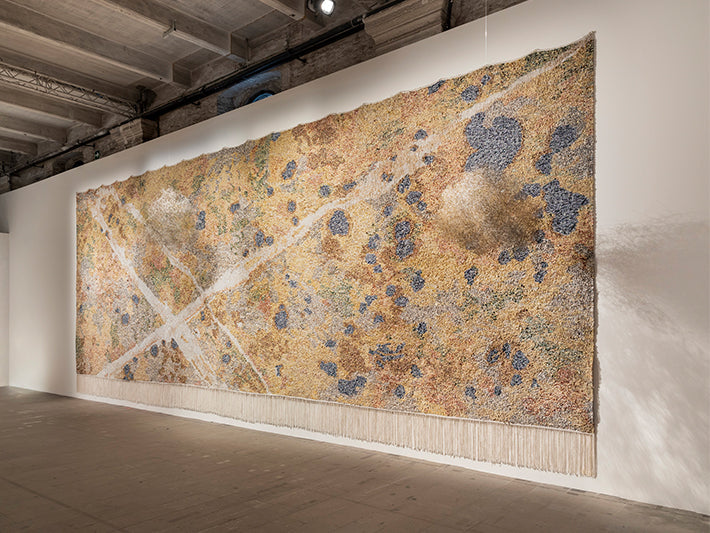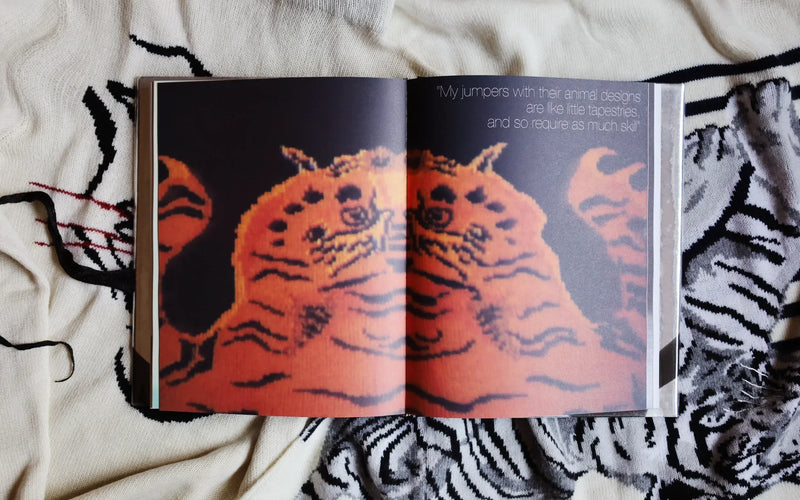

The exhibition includes over 200 artists from 58 different countries, of these, 180 are participating in the Biennale for the first time and, again for the first time, the majority are women or gender-neutral. There's no doubt about it, we're not used to, at least in Italy, seeing such important exhibitions curated by women, and we're not even used to a narrative that is different from the dominant one of the White Male. This femininity, desired or unwanted, is so present and powerful that it transcends the works and becomes part of the environments themselves: there is a "feminine smell" in the exhibition spaces, of sweat, milk, blood, and all those stickiness which belong to parts of the body that are often silenced or narrated in a stereotyped way. There is Gwendolyn, one of the famous Nanas (girls) of Nike de Saint Phalle's, who explores the possibilities of the body by deforming its proportions, giving us bulbous abdomens and protruding breasts. There are paintings by Miriam Cahn, 28 works dedicated to childbirth, menstruation, and sexuality of all kinds. There are the domestic psychodramas of Paula Rego, which reflect on the problematic aspects of the family and the home, transforming the everyday into the grotesque. And then there are the photographs by Aneta Grezeszyk, which subvert the traditional mother-daughter relationship through the interaction between the artist's daughter and a silicone doll depicting the mother. Brik House, the gigantic sculpture by Simone Leigh located at the entrance to the Arsenale, depicting an eyeless female figure, watches over all this. Because lately there are so many things that women would rather not see. Contributing to this feminine feeling that determines the exhibition, however, is not only the female artists, the themes covered, and the Great Mothers who assertively watch over their creatures. Much space is also given to techniques traditionally considered feminine, such as embroidery, macramé and weaving. This is how textile bodies and landscapes are born, which tell stories of looms, spinning wheels, needles and threads and all those objects and that know-how that are typical, for example, of the world of fashion and that no one, in this century of fast fashion and disposable clothes, he seems to remember.This is the case of the gigantic sculptures by Mrilnani Mukherjee, made with the ancient Arab technique of macramé, of the dreamlike tapestries of the Tunisian artist Safia Farhat, of the talismans by Tain Lewis made with waste fabrics and held together by patience and physical pain ( hands, back, head, because not all that glitters is gold). And then there is the textile work of Igshaan Adams, a masterpiece of threads, fabrics, beads, knots and weaves, because we want to hope that, in 2022, "feminine" no longer means the exclusive prerogative of women or, even worse, “frivolous”, but rather an open invitation to explore an artistic, social and cultural dimension that belongs to everyone but which for too long has been kept away from the spotlight of the international art scene, relegated to the creative equivalents of grandmothers' attics like a not too long ago it was done with rebellious females. Thanks to Cecilia Alemani's Milk and Dreams, to Leonora Carrington's magical creatures, and to the Biennale itself, which undauntedly looks to the future even when the present appears desolate. Hoping that it is the beginning of a new, long, fantastic story.




